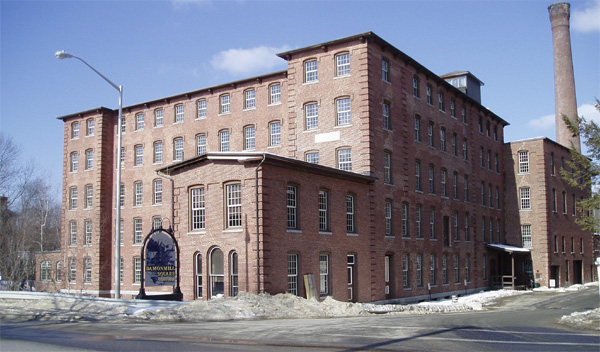

21. Damon Mill Today, 1922-present
After the equipment was moved out in the early 1920s and the mill no longer operated as a textile manufactory, it was used by the A&P as a warehouse until the early 1930s, when it was bought by Jack Lord of Stow. Lord used it as an apple storage facility, and it remained cold storage for apples for fifty years. In a 1990 oral history interview, Richard Damon, Calvin Carver Damon’s great-great-grandson, remembered it as “. . . a busy place, there were lots of trucks full of apples pulling in all the time . . .” It also provided employment for many neighborhood people. After Lord sold the building in 1970, it went through three successive hands until, about to be auctioned, it caught the attention of Bill Sullivan. Sullivan interested Richard Damon in the property and he came on board as a limited partner. The building was in complete disrepair, with its north walls collapsing, windows broken, and roof caving in. Through the efforts of Sullivan, Damon, and others, the mill was renovated. It took seven years, but the final result was an inspired, thoughtful restoration of the building that Edward Carver Damon had had the foresight to make graceful as well as utilitarian, a building that was almost assured of finding a place in Concord’s history.
Now an assemblage of offices and workspaces, Damonmill Square has gone from textile mill to office space through a sensitive restoration that preserved the structure and retained the architectural details. It is an excellent example of adapting an older building for contemporary use without compromising its historical authenticity.